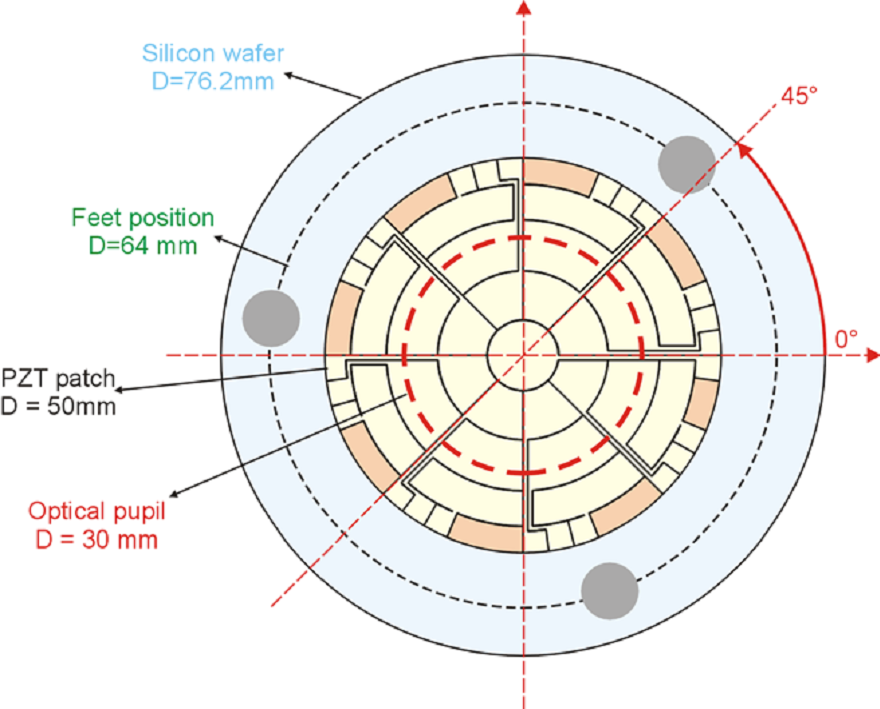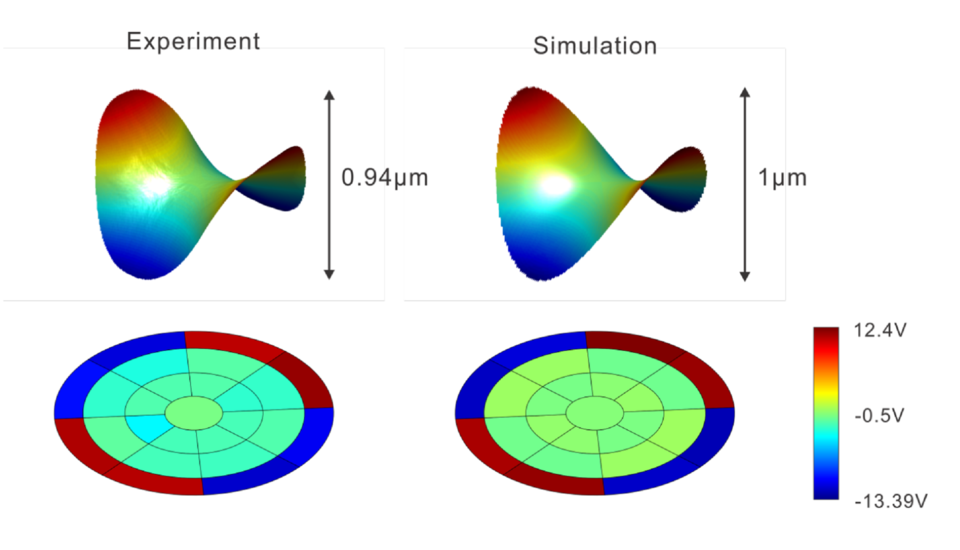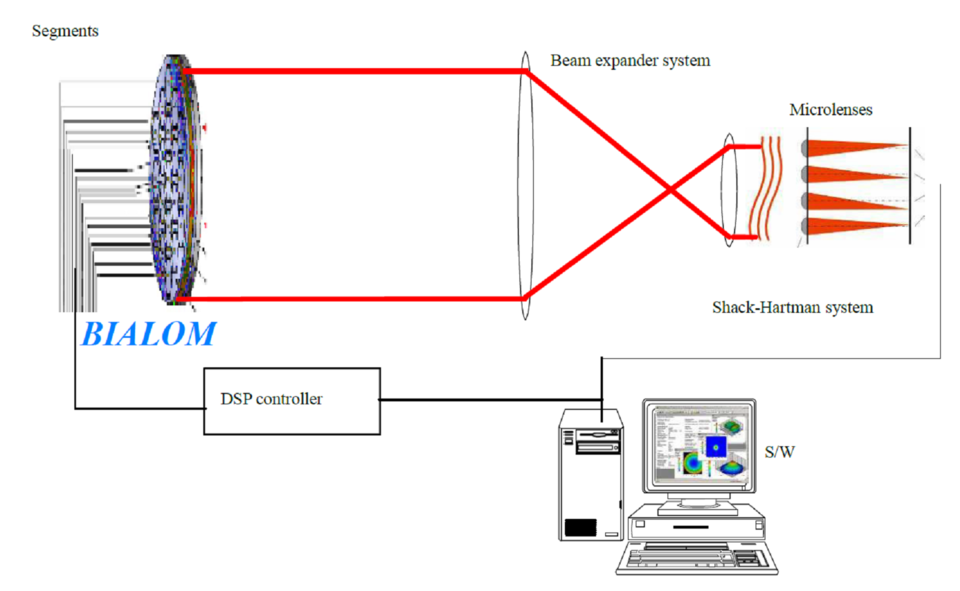Bimorph adaptive large optical mirror demonstrator (BIALOM)
| Bimorph adaptive large optical mirror demonstrator (BIALOM) | |||
| Programme: | GSTP | Achieved TRL: | 4 |
| Reference: | G609-66MM | Closure: | 2016 |
| Contractor(s): | Université Libre de Bruxelles (BE), CSL (BE), AMOS (BE) | ||
The purpose of this activity is to design, manufacture and test a segmented deformable mirror equipped with an array of bimorph piezoelectric actuators. It was not possible to propose a design in line with the mass budget for an application of the technology to deformable segmented primary mirrors. It was therefore decided to retarget the project towards the demonstration of an AO mirror used as a secondary corrector, to compensate manufacturing errors and thermal distortion of large lightweight aluminium mirrors (D>0.5 m). The role of this deformable mirror is to compensate for all direct and indirect aberrations: manufacturing error, gravity release, thermal gradient, etc.
Objectives

The objective of this activity is to design, develop and test an ultra-lightweight mirror. Ultra-light weighting shall be achieved by the already proven concept of large, bimorph mirrors made of wafers with PZT actuators. The suitability of this technology for optical space telescopes shall be demonstrated by manufacturing a lightweight mirror breadboard. The breadboard shall include the actuating electronics and a lightweight mounting structure.
During Phase 1, a representative test case of the space telescope including a light-weighted primary mirror will be identified. It will be used to establish the design and performance specifications to be met by the deformable mirror developed and manufactured during the rest of Phase 1. Early performance tests will be performed to compare the behaviour of the demonstrator to that predicted by numerical simulations.

Phase 2 will start with environmental tests to assess the adequacy of the design with typical constraints of the space environment. Then, “hardware in the loop” performance test will be performed in a fully integrated test bench including the deformable mirror prototype and a large light-weighted aluminium mirror. Tests shall demonstrate the optical performance in the relevant environment as well as the structural stability to withstand the launch conditions. The suitability of lightweight BIALOMs for space telescopes shall be demonstrated in a relevant environment (TRL 5) while any technical restrictions/shortcomings of the technology shall be identified.
The above picture displays the geometry of the deformable mirror (isostatic supports, keystone electrode design, electric tracks and optical pupil).
Achievements

The Active Structures Laboratory manufactured two full prototypes during the phase1. The mirror consists of a mono crystal Si wafer (D=75 mm t=500μm) covered with an optical coating on the front side and an array of PZT actuators acting in d31 mode on the back side (d=50 mm, t=200 μm) with 25 independent electrodes. The mirror is mounted on an isostatic support with three linear PZT actuators to control the rigid-body motion (tip/tilt).
The graphics to the right show a comparison between experiment and F.E simulation. Astigmatism of 1 μm amplitude in a pupil of 34.5 mm diameter (shape of the mirror and voltage map - relative measurement).

The performance of the manufactured deformable mirror was tested in terms of RMS wavefront error, open-loop long-term stability, voltage budget for active control, rigid-body actuation, reflectivity and lowest eigen-frequency. The performances of the prototype are compliant with the requirements.
An overview of the test bed for the performance verification is given on the left. The specifications for wavefront correction using bimorph adaptive large optical mirror demonstrator (BIALOM). The typical surface form error (SFE) on large (700 mm diameter) and highly lightweight aluminium mirror is evaluated based on AMOS manufacturing experience and on finite element simulations.
Application
Large optical telescopes for earth observation and science missions.
Non-space use
Adaptive Optics for Earth-based astronomy, High power laser.
Further activities
Qualification tests are necessary to go from TRL4 to TRL5.















 Germany
Germany
 Austria
Austria
 Belgium
Belgium
 Denmark
Denmark
 Spain
Spain
 Estonia
Estonia
 Finland
Finland
 France
France
 Greece
Greece
 Hungary
Hungary
 Ireland
Ireland
 Italy
Italy
 Luxembourg
Luxembourg
 Norway
Norway
 The Netherlands
The Netherlands
 Poland
Poland
 Portugal
Portugal
 Czechia
Czechia
 Romania
Romania
 United Kingdom
United Kingdom
 Slovenia
Slovenia
 Sweden
Sweden
 Switzerland
Switzerland


























